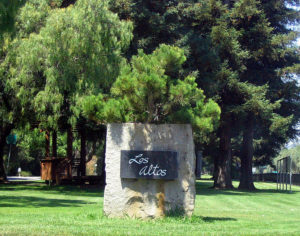 The subject of land use regulation has been a regular emphasis of this blog since its inception. Most of the time, the topics I have written about in this regard have arisen in the context of big-picture controversies involving substantial and wide-ranging California real estate interests. In this article, however, I would like to shift the focus to my own back yard—figuratively, if not literally—by examining certain events that have occurred in Los Altos, the city where I live, over the last few weeks.
The subject of land use regulation has been a regular emphasis of this blog since its inception. Most of the time, the topics I have written about in this regard have arisen in the context of big-picture controversies involving substantial and wide-ranging California real estate interests. In this article, however, I would like to shift the focus to my own back yard—figuratively, if not literally—by examining certain events that have occurred in Los Altos, the city where I live, over the last few weeks.
From the outside, Los Altos may seem like a sleepy bedroom community, and there is some truth to that perception. Sometimes it feels to me as though the shopkeepers roll up the streets after 9 p.m., and Main Street in Los Altos is certainly nothing like North Santa Cruz Avenue in Los Gatos when it comes to night life. It’s the kind of city where a noisy AirBNB party can draw negative headlines, and ultimately result in a ban on short-term rentals, adopted earlier this year.
Still, while Los Altos has a population of only about 29,000, it is a microcosm of the scope, variety and intensity of California land use matters. For example, like many other regions around the state, the Loyola Corners neighborhood of Los Altos has long had a contentious history when it comes to change and redevelopment . Recently, however, as a result of several years of conflict and litigation, a controversial residential/commercial mixed-use development project in that area, which would replace an older, traditional commercial structure, was given tentative approval to resume moving forward through the review process. It is anticipated that the project will reflect a new design in response to community criticisms that had previously been made with regard to prior iterations of this proposal, demonstrating how these policy decisions end up being shaped by public input.
Another broad land use theme that has recently come into specific focus in Los Altos is the notion of legislating by ballot box. We have seen how these proposals have been brought forward at the state level. This fall, Los Altans will be asked to consider the self-styled “Protect Our Parks and Public Lands Initiative,” which would amend the city’s general plan to require voter approval for any proposed sale, lease, or changes in the use of certain land designated as “Parks,” “Other Open Space” or “Public and Institutional.” In response, the Los Altos City Council has directed its city attorney to draft a general plan amendment that would bar the sale of city parkland without voter approval, as a potential alternative to the proposed initiative. There has also been harsh reaction to this proposed initiative from some local citizens; one former mayor described the proposition as an “evil” effort to “kill local government” being advanced by a small group of disgruntled landowners.
Finally, if you’ve been reading my blog for the last number of months, you are aware that I’ve been regularly touching on efforts in here California to address its critical shortage of housing, including the enactment of state legislation intended to make it easier to develop “accessory dwelling units” (“ADUs”), commonly known as “granny units,” by eliminating a variety of local impediments to their construction. You may also remember that I will shortly be launching a new website intended to serve as a clearinghouse for information on ADUs in Silicon Valley, in an effort to provide a valuable resource to those who might want a better understanding about the development of this type of housing. In the spirit of that venture, I would like to note that the City of Los Altos, in compliance with the state legislation mentioned above, has just now adopted ordinances that will make it easier to build ADUs in this city.
All of this activity in Los Altos, which has occurred in the span of a few short weeks, only serves to illustrate the breadth and depth of land use concerns in California. Given these sorts of events, it is of no surprise that local planning commissions have been a significant focus of political pursuits in this state, often becoming springboards for future public office among their members. This should serve as food for thought the next time you pass by our seemingly quiet little suburb.